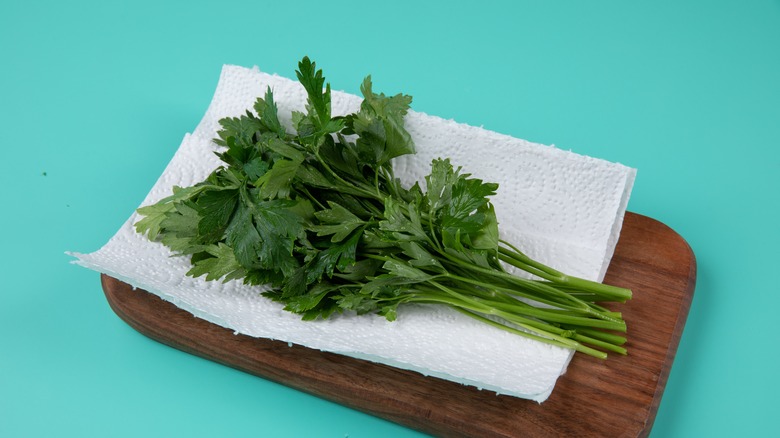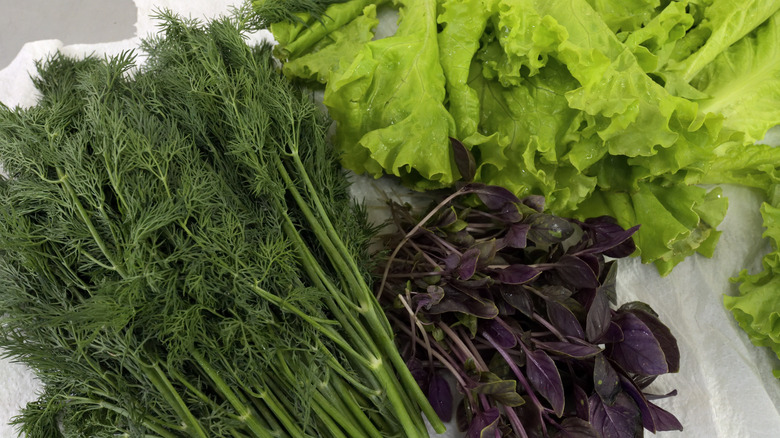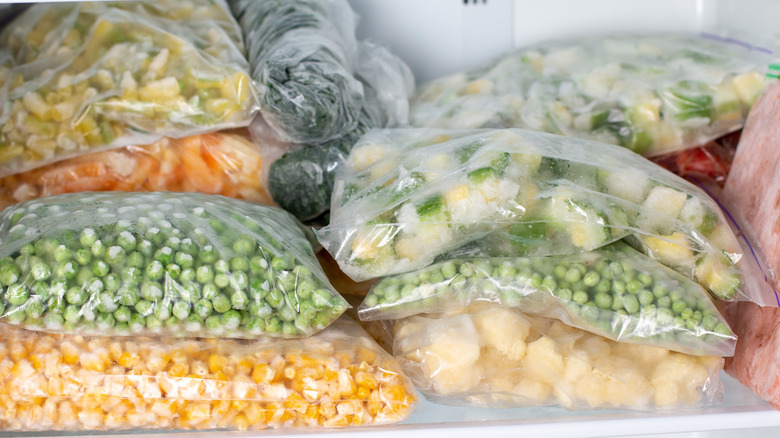The Paper Towel Hack That Keeps Refrigerated Vegetables Fresher For Longer
Grocery shopping has changed a lot since the COVID-19 pandemic began in 2020 — most notably, everything is more expensive. From shortages and hoarding to price gouging to record-breaking inflation, a trip to the grocery store can cost twice what it did only a couple of years ago.
There are lots of ways to keep your grocery spending in check, including shopping at cheaper grocery stores and buying private-label products. One of the most important ways to save money that doesn't get as much press, however, is preventing food waste. Nothing is more expensive than the food you throw away uneaten.
Food waste is also a huge environmental problem. According to the EPA, it creates the same amount of greenhouse gasses in the U.S. every year as the emissions from 42 coal-fired power plants. One of the biggest offenders when it comes to food waste? Fresh produce. Vox reports that nearly half of all produce is thrown away in this country before it even gets to the store because it's not cosmetically perfect. At home, Fortune reports, almost a third of what you buy is also thrown away. To buy yourself a little more time before your fresh produce goes bad, try using the paper towel trick to keep your veggies fresh.
Control moisture with paper towels
Most of the fresh produce you bring home from the grocery store has a shelf life of anywhere from a few days (fresh lettuce) to a few weeks (onions and sweet potatoes). If you notice that you're throwing away a lot of your refrigerated produce, try lining your crisper drawers with a few sheets of paper towel.
By putting paper towels in your crisper drawers, you're giving excess moisture somewhere to go, which in turn helps keep produce from wilting. You can also pop a paper towel in with a bag of lettuce or mixed greens and it will work the same way, or prolong the life of fresh herbs by wrapping the bunch in a paper towel and putting it in a plastic bag or container in the crisper.
If you tend to buy enough produce to fill the crisper drawer, though, lining the drawer will work for your whole vegetable haul. Each time you go shopping, swap out the towels for a fresh lining that will absorb the new moisture. As a bonus, the paper towel liner will keep your drawers cleaner, notes Maytag, especially if you forget about something and it leaks rotten veggie juice into the drawer (looking at you, cucumber and celery).
Start fresh or go frozen
If you're having trouble keeping produce fresh, start off on the right foot by buying the freshest fruits and vegetables. Shopping seasonally and locally is the best way to know that the strawberries or kale you're choosing have spent the least amount of time between the field and your shopping cart. As soon as a piece of produce is picked, the spoilage clock starts ticking, and if it has to travel across the country on a truck, you're going to have a lot less time to waste in the fridge than if your corn came from a regional farm. Plus, you'll be supporting the local farming industry at the same time.
It's also not always best to buy your produce fresh, especially if you seem to throw a lot away. Despite what you might have heard, frozen produce has the same amount of vitamins and minerals as its fresh counterparts because they're flash-frozen on the day they're picked. You can save a lot of money and food waste if you adapt to using frozen products — they have a much longer shelf life.
If you find you're throwing away bags of fresh spinach, for example, frozen spinach works just as well for almost any recipe except for salads where you want that fresh leafy texture. Just be sure to check the labels for any added sugar or sodium.


